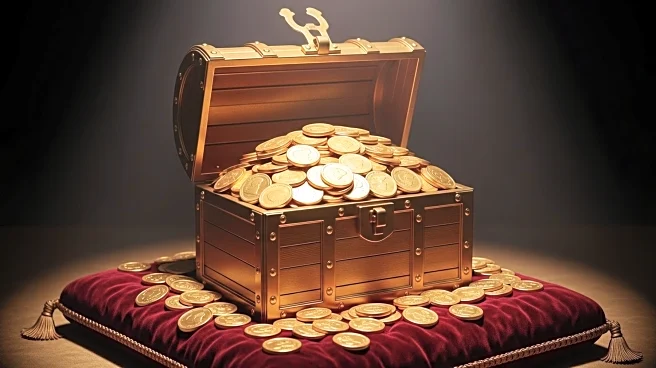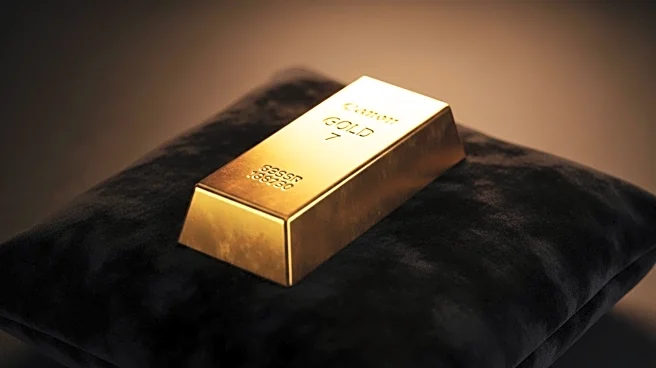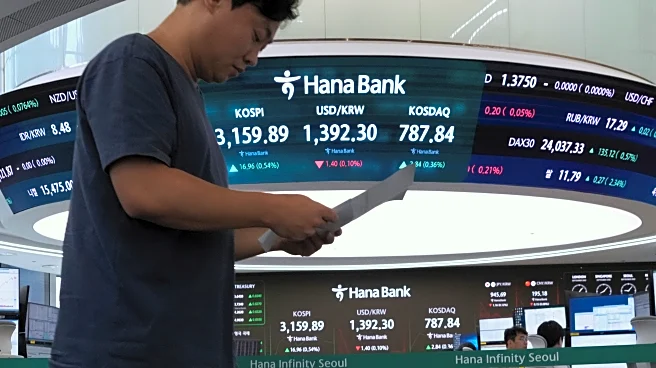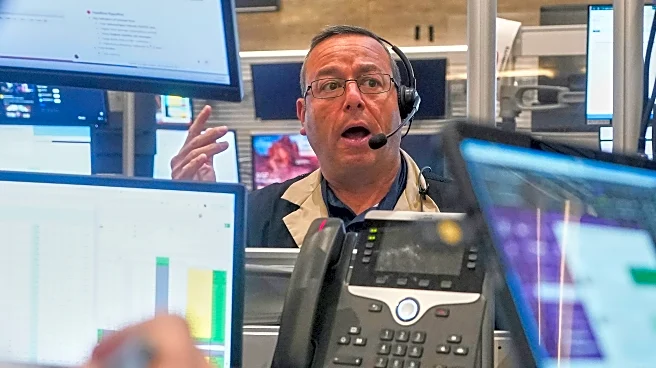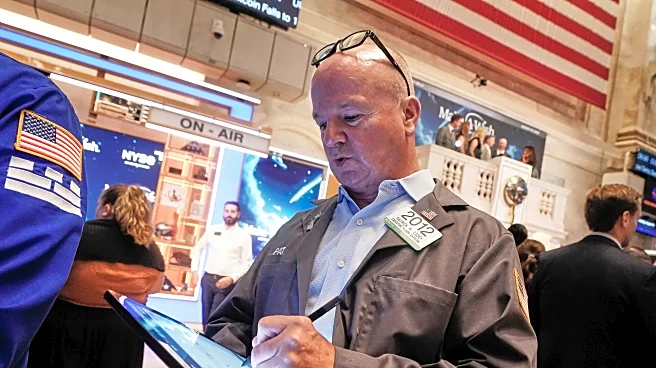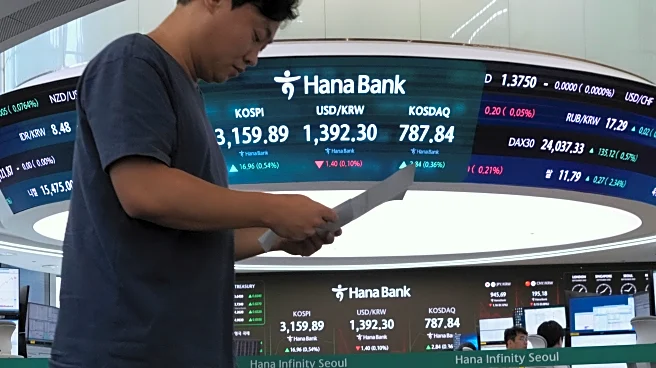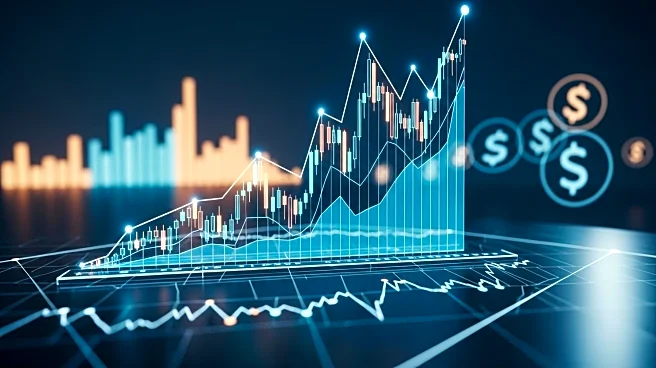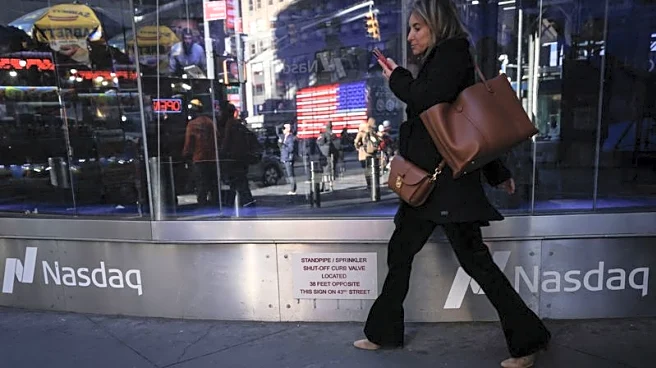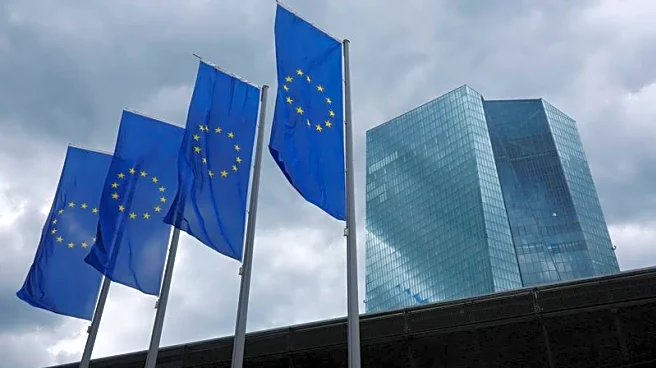What's Happening?
Gold prices have surged to a new record high, reaching $3,578.40 per ounce, as global shares mostly declined following the closure of U.S. markets for Labor Day. The increase in gold prices reflects investor uncertainty, particularly in light of President Trump's challenges to the U.S. Federal Reserve and other institutions, which have shaken confidence in the U.S. dollar. Silver prices also rose, surpassing $40 an ounce for the first time since 2011. Analysts attribute the shift from U.S. Treasuries to precious metals to concerns over U.S. government debt, trade tensions, and geopolitical risks. European markets saw declines, with Germany's DAX dropping 1.1% and Britain's FTSE 100 down 0.4%. Asian markets showed mixed results, with Japan's Nikkei 225 gaining 0.3% and South Korea's Kospi advancing 0.9%.
Why It's Important?
The record high in gold prices signifies a growing lack of confidence in fiat currencies, particularly the U.S. dollar, amid economic and political uncertainties. This shift could have significant implications for U.S. economic policy and global trade relations. Investors moving away from U.S. Treasuries may impact government borrowing costs and fiscal policy. The recent court ruling against President Trump's tariffs further complicates the trade landscape, potentially affecting international relations and economic stability. The rise in precious metal prices also highlights the ongoing volatility in global markets, which could influence investment strategies and economic forecasts.
What's Next?
The Trump administration may appeal the recent court ruling on tariffs to the U.S. Supreme Court, which could lead to further legal and economic developments. Upcoming U.S. economic data releases, including durable goods orders and jobless claims, will provide insights into the economy's resilience amid higher tariffs. European manufacturing data and consumer price index readings will also be closely watched for indications of economic health. Investors will continue to monitor geopolitical tensions and trade negotiations, which could further impact market dynamics and investment decisions.
Beyond the Headlines
The shift towards gold and silver as safe-haven assets reflects deeper concerns about the stability of fiat currencies and the global financial system. This trend may prompt discussions on the future of monetary policy and the role of precious metals in investment portfolios. The legal challenges to President Trump's tariff policies highlight the complex interplay between executive power and judicial oversight, raising questions about the limits of presidential authority in economic matters.
